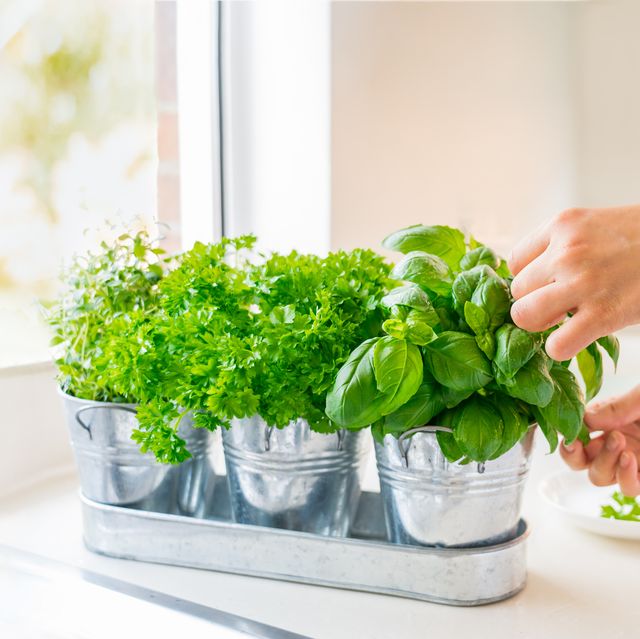
Add garden fresh flavor to your meals year-round. Grow a few of your favorite herbs indoors, harvest and enjoy.
Select a variety of herbs you and your family enjoy and use for cooking, decoration, or fragrance. Basil, chives, cilantro, oregano, marjoram, mint, parsley, sage and thyme are some of the easier herbs to grow indoors. Purchase plants or seeds from your local garden center, favorite garden catalog or produce section of the grocery store.
Most herbs need six to eight hours of bright light each day. A south-facing window in winter is best but an east- or west-facing window may be sufficient. You can increase success with artificial lights. Set the timer for 14 to 16 hours a day and keep lights 6 to 12” above the plants.
Use a variety of plants to create an attractive display in a large windowsill planter. Combine plants that have the same growing requirements to ensure success. Or place each herb plant in its own container. A four- to seven-inch pot is a good size when starting with smaller plants. Growing individual plants in their own container allows you to provide the specific watering, care and transplanting they need.
Select containers with drainage holes or reduce maintenance and increase success with self-watering containers and planters. Just fill the water reservoir that gradually releases water into the soil for the plants to use. You will need to water less often.
Fill the container with a well-drained quality potting mix. Many contain a slow-release fertilizer, providing weeks or even several months of nutrients for your plants. Just check the label for details and adjust fertilization as needed.
Water the containers thoroughly whenever the top inch of soil is dry. Pour off excess water so the plant does not sit in the excess and succumb to root rot. Or place pebbles in the tray to elevate the pot above any water that collects in the saucer or tray. This means less work for you and better growing conditions for the plant.
Incorporate a slow-release fertilizer or use a diluted solution of any indoor houseplant fertilizer once the nutrients in the potting mix are spent. Follow label directions and do not overfertilize as too much fertilizer can harm your plants.
Begin harvesting most herbs when they reach six to eight inches in height and as needed. Use a sharp pair of garden scissors, snips, or hand pruners. Make the cuts above a set of healthy leaves so the remaining plant is neater and tidier in appearance. As the plant grows, you will be able to harvest larger quantities and more often.
Start with a few of your favorite herbs and expand your collection as you gain experience. Soon you will be confident and eager to try more challenging favorites.
Melinda Myers has written more than 20 gardening books, including Small Space Gardening. She hosts the “How to Grow Anything” DVD series and the Melinda’s Garden Moment TV & radio segments. Her website is MelindaMyers.com.
Related Articles & Free Vermont Maturity Subscription

10 High Impact Tulips for Your Garden
Brighten Indoor Décor with a Colorful Cyclamen






Comment here